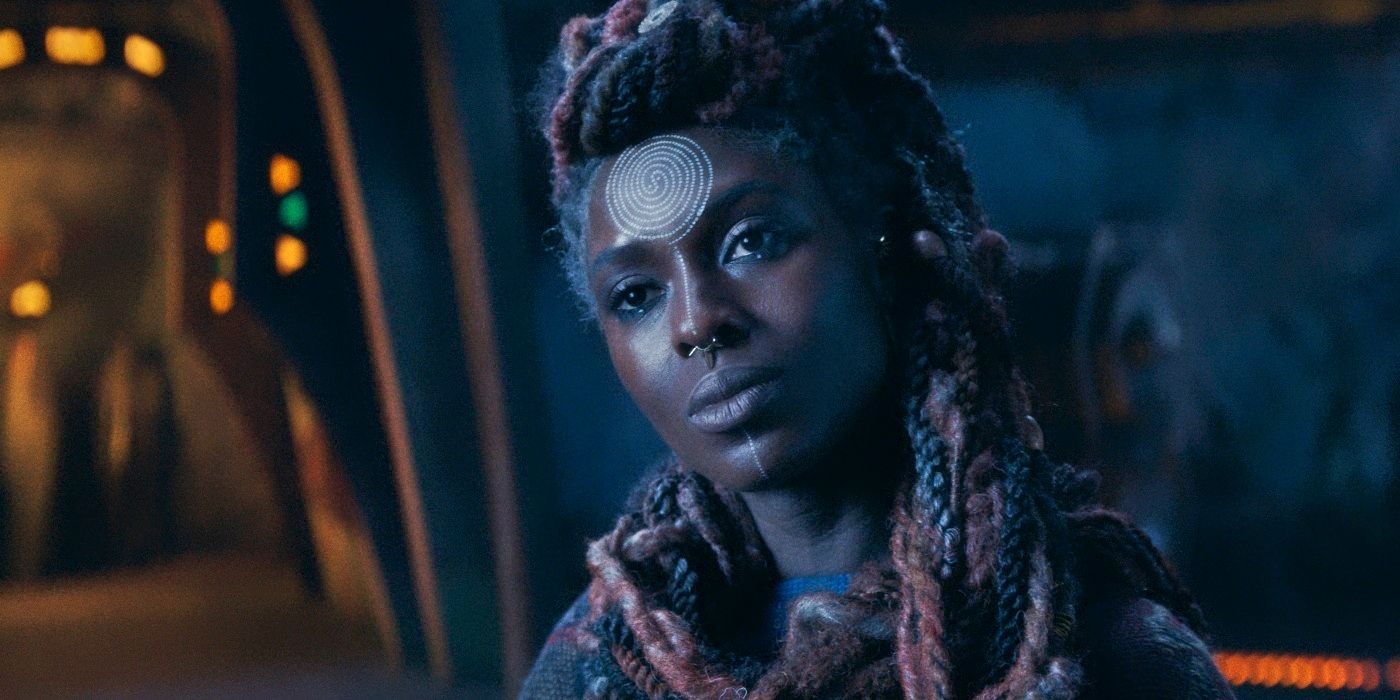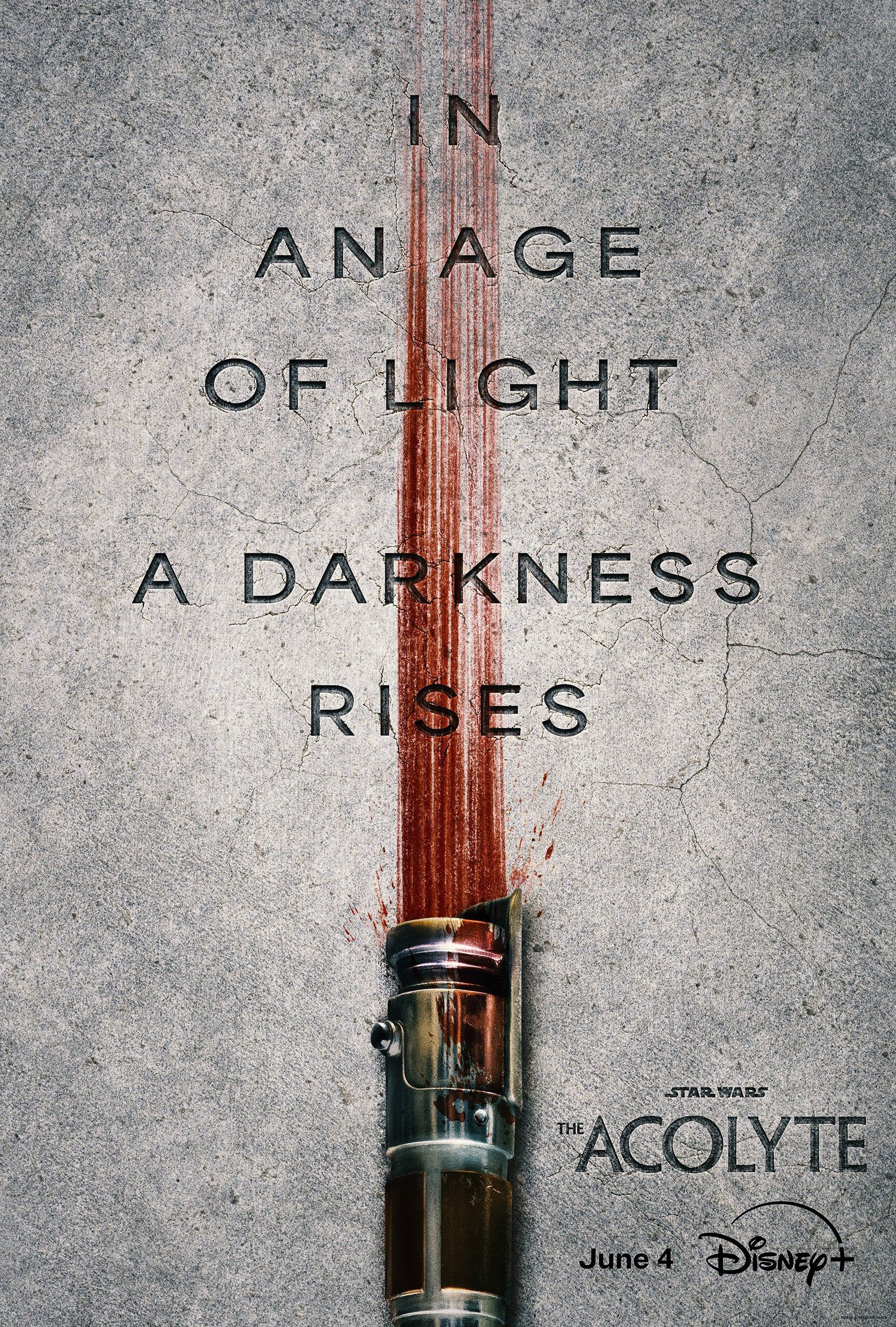Editor’s Note: The following contains spoilers for The Acolyte finale.
The Big Picture
-
The Acolyte
‘s season finale subverts the classic scene between Luke Skywalker and Palpatine at the end of in
The Return of the Jedi
. - Osha’s decision to embrace the dark side disrupts traditional Star Wars narratives.
-
The Acolyte
introduces a new anti-hero, Osha, challenging the legacy of heroism in the Star Wars universe.
The Acolyte just concluded its first season with one of the most thrilling episodes in recent Star Wars television history, and the finale to Leslye Headland’s prequel series treats fans to no small number of exhilarating moments. From a high-stakes space race through an asteroid field to a Jedi scandal on Coruscant, Headland’s finale combines the original trilogy’s sense of interstellar adventure with the prequels’ political intrigue to balance both sides of the Star Wars universe. The episode rounds out Mae and Osha’s (Amandla Stenberg) dark origin story while also featuring a long-awaited cameo from Jedi Master Yoda and a brief glimpse at a skin-crawling Darth Plagueis, but the finale’s most pivotal scene underscores the series’ focus on breaking new ground in the galaxy by putting a dark twist on the ending to Star Wars: Episode VI — Return of the Jedi.
After Mae escapes from Jedi Master Sol (Lee Jung-jae) and Osha tracks her sister back to their homeworld, all parties converge back on Brendok, where the Stranger (Manny Jacinto) engages Sol while the sisters fight in their former bedroom. When the pair spots Master Vernestra’s (Rebecca Henderson) Jedi craft overhead, Mae breaks off their duel just in time to take her mother’s killer by surprise, disarming Master Sol as the Stranger urges her to take her revenge in order to complete her journey to the dark side. This temptation not only offers Mae the sense of closure she’s chased since the beginning of The Acolyte, however, as it also resembles the iconic throne room scene from the final installment of the original Star Wars trilogy.
‘The Acolyte’ Season 1 Finale Subverts the Throne Room Scene in ‘Return of the Jedi’
In a broad sense, the basic setup of The Acolyte’s confrontation scene is nothing new to Star Wars. Sith Lords have tempted Jedi to join the dark side in almost every kind of Force-centered story, with Kylo Ren’s (Adam Driver) appeal to Rey (Daisy Ridley) in Disney’s Sequel Trilogy the most recent example in live-action. Ahsoka is likewise tempted by Maul in Star Wars: The Clone Wars Season 7, while Ezra Bridger is constantly enticed throughout Star WarsRebels, but The Acolyte’s scene between the twins, Sol, and Jacinto’s Stranger stands out from these attempted dark side seductions because of its direct parallels to Luke Skywalker’s (Mark Hamill) final confrontation with the Emperor (Ian McDiarmid) in the climax of his Jedi story.
Just as Luke is tempted by Emperor Palpatine after defeating Darth Vader, Mae’s ultimatum is delivered after a long battle between the Stranger and Sol, with the latter acting as a similar father figure to Osha throughout The Acolyte. Moreover, instead of choosing violence, Mae mirrors Luke’s actions throughout the scene by tossing Sol’s lightsaber aside, just as Luke does when asked to end his father and take his place by Palpatine’s side. The Emperor and the Stranger likewise frame Mae and Luke’s ability to overpower their opponents as a sign that they have completed their training. Luke’s completion, however, results in him renouncing the dark side and inspiring Darth Vader to redeem himself in one of the most heartwarming, classic moments in all Star Wars. The Acolyte’s finale, on the other hand, uses these familiar associations to build audiences’ expectations to a similar result, only for Mae’s leniency to immediately be interrupted by her sister’s wrath.
Osha’s Choice in ‘The Acolyte’ Finally Allows Audiences To Join the Dark Side
Unlike Return of the Jedi, Osha’s arrival doesn’t signify a positive climax for The Acolyte’s main story. As soon as Osha hears Sol admit that he lied to her about killing her mother, the series’ true acolyte finally stops holding back. Osha’s rage enables her to finally access the connection to the force she’s been lacking throughout the series, allowing her to claim Sol’s lightsaber and provide Star Wars fans with the first instance of a kyber crystal being bled on screen, but Osha’s sudden turn also dramatically reverses the scene’s relationship to Return of the Jedi. Instead of ending with triumphant restraint and the flawed father figure redeemed, The Acolyte allows Osha to succumb to her rage and kill Sol, illustrating the series’ dedication to showcasing the allure of the dark side.
In contrast to Return of the Jedi’s traditional depiction of the dark side, which manifests primarily in Darth Vader’s brutality and Palpatine’s insatiable lust for unlimited power, The Acolyte furthers its more nuanced approach to the Force by allowing Osha’s dark turn to feel satisfying. The fact that Sol never truly apologizes for killing her mother makes Osha’s anguish more sympathetic and her subsequent violence understandable, humanizing her by allowing Star Wars to represent more volatile emotions than forgiveness and faith. Furthermore, the finale’s final scene of Osha and the Stranger sharing an intimate moment together underneath a beautiful sunset romanticizes her decision to do the opposite of Luke, proving sometimes the galaxy’s happy endings are actually born from dark beginnings.

Related
What Exactly Is a Vergence in ‘The Acolyte’?
Mae and Osha’s origins tie ‘The Acolyte’ to a major piece of Star Wars history.
‘The Acolyte’ Episode 8 Establishes Osha As Star Wars’ Anti-Chosen One
Osha’s decision to kill her proverbial father and embrace the dark side goes beyond subverting Luke’s classic choice, however. By calling back to how the light side triumphed in the original Star Wars, The Acolyte’s decision to change course by representing a victorious, sympathetic dark side apprentice in its own finale dramatically alters the direction of modern Star Wars. With Mae’s mind wiped by Osha’s new master and the former assassin now in the custody of the Jedi, Osha is the face of The Acolyte’s dark side, and the series’ depiction of her character in Episode 8 is the final subversion of Return of the Jedi’s most dramatic scene. Because just as Luke inspires Anakin to fulfill his destiny as Star Wars’ prophesied savior by saving him from Palpatine, Osha’s presence in The Acolyte Season 1 finale establishes her as the antithesis to Star Wars’ Chosen One.
Beyond her decision to kill Sol, Osha’s depiction throughout the series makes this comparison clear. Like Anakin, Osha was created through the Force instead of born, granting her a similar status in terms of galactic significance and power. Like Anakin, the death of Osha’s mother was also largely the fault of the Jedi, as the Jedi Order’s rules forbidding attachments prevented the young Skywalker from saving Shmi (Pernilla August) in The Phantom Menace similarly to how Sol’s actions killed Mother Aniseya. However, when both characters are confronted by their climactic scenes with their family members, Anakin chooses to let go of Darth Vader and be with his son. In contrast, Osha resembles Darth Vader more than ever in The Acolyte finale, both killing Sol with the Sith Lord’s iconic force choke technique and beginning the episode with a tribute to Vader’s recognizable breathing.
By walking the opposite path of the Star Wars universe’s future Chosen One, Osha’s decision unbalances the Force, but surprisingly, this disruption is entirely refreshing. After decades of Jedi triumphing over their more dangerous emotions, Osha’s indulgence of her darkest impulses allows the character to display genuine vulnerability. By calling back to one of the franchise’s most iconic moments and then subverting its outcome, The Acolyte turns the legacy of Star Wars on its head, introducing a new kind of anti-hero to the galaxy whose dark desires and justified fury make the dark side more appealing. The Acolyte’s unconventional ending also invites the possibility of even more unique surprises for Star Wars in the future, setting the stage for a new era of darkness to replace the straightforward heroics of the past.
The Acolyte is currently streaming on Disney+ in the U.S.
WATCH ON DISNEY+

